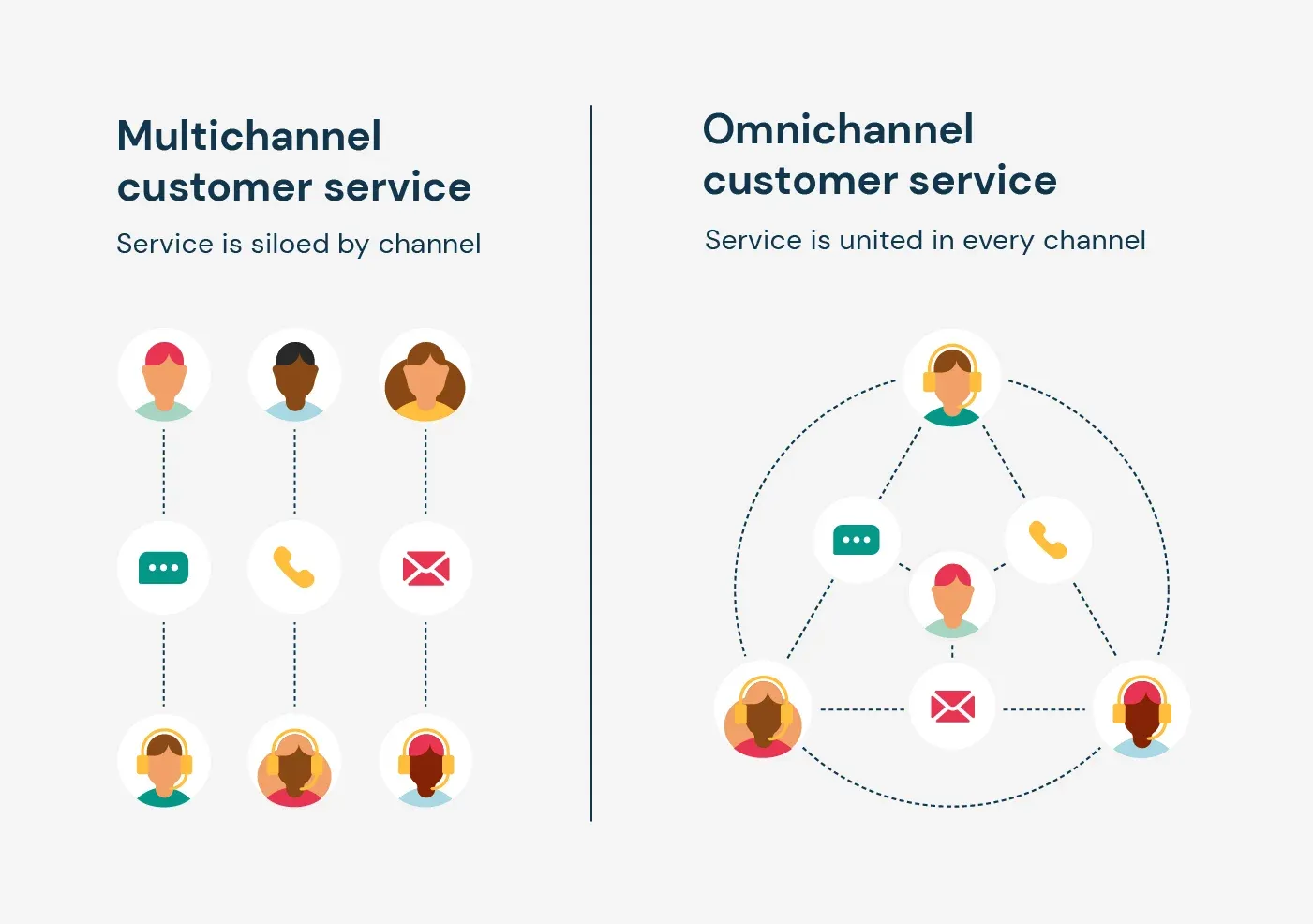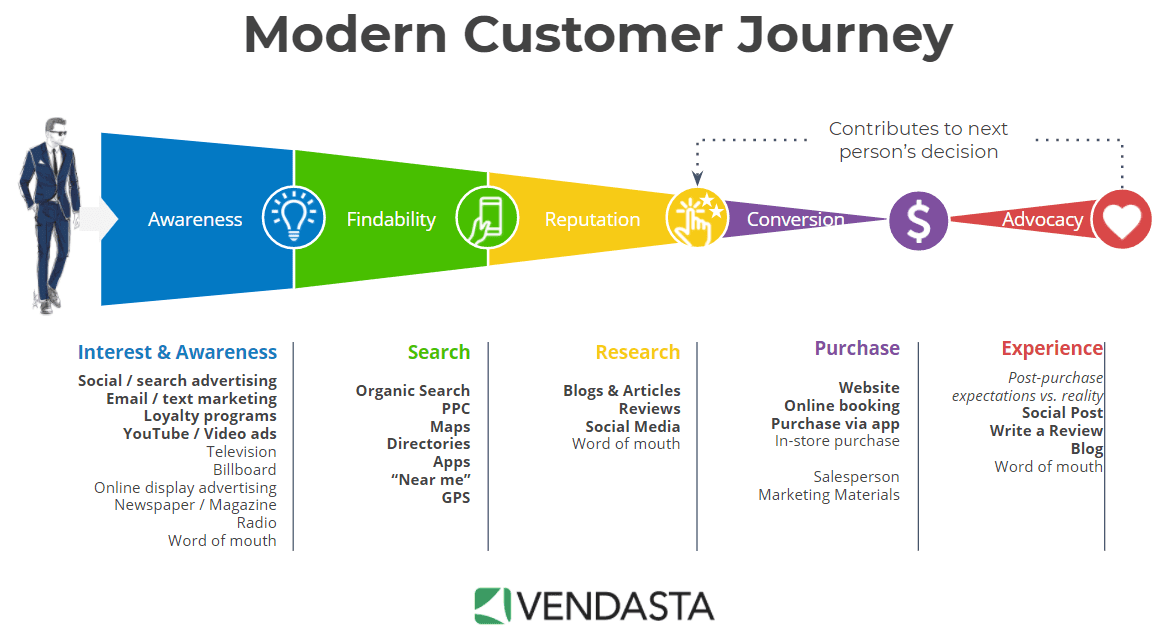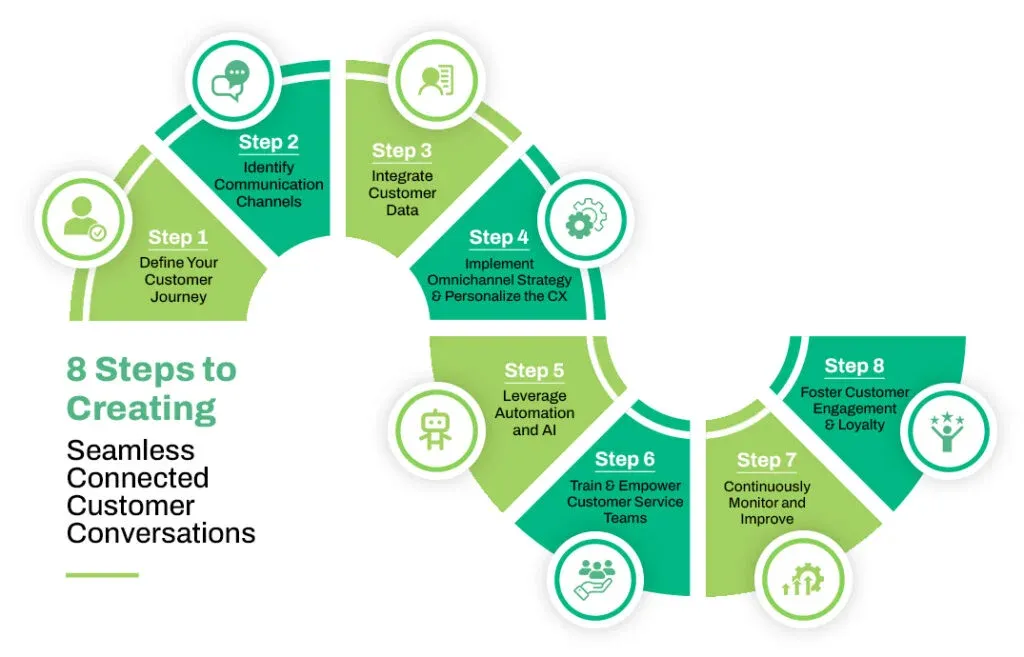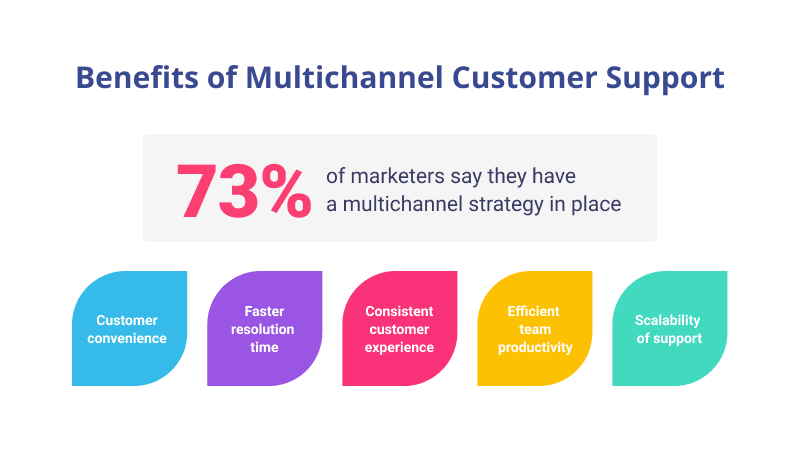Introduction
As technology advances, it becomes an integral part of our daily lives, blurring the lines between online and offline activities. This behavior shift requires adaptation from marketing, sales, and customer service professionals. But it's more than individually catering to devices like desktops, mobiles, tablets, or smartwatches.
The real goal is to create an "omnichannel experience" accessible to consumers at their convenience. This isn't just fancy jargon; it's a strategy that builds stronger customer relationships by providing seamless service across various platforms and devices.
What makes this approach exceptional is its flexibility. It's not limited to a single channel, ensuring customers enjoy a consistent experience no matter where or how they interact with a brand. This focus on convenience and quality addresses some common pain points customers have.
For marketers, omnichannel marketing is a valuable tool. It helps them make sense of data and deliver relevant, personalized customer experiences. Studies show that 70% of customers expect to interact with companies through their preferred channels.
This article will dive into the omnichannel concept and see how it can simplify marketing, sales, and service strategies while boosting profitability.
What is Omnichannel Customer Service?

Omnichannel customer service provides a seamless and consistent experience across multiple communication channels.
Whether your customers contact you via email, phone, live chat, social media, or carrier pigeon (just kidding!), they can expect the same level of service and support.
This approach allows customers to switch between channels without missing a beat and creates a cohesive experience that keeps them returning for more.
Benefits of Omnichannel Customer Service
Adopting an omnichannel approach to customer service has many advantages that can take your business to new heights.

Consistency is Key
A consistent experience across multiple channels shows customers you value their time and effort. It eliminates the frustration of repeating information or starting from scratch when switching channels. Customers appreciate the seamless transition, and it builds trust in your brand.
Meeting Customers Where They Are
Different customers have different preferences when it comes to communication. By offering multiple channels, you meet customers where they're most comfortable.
Some prefer chatting online, while others prefer email or social media.
With an omnichannel strategy, you can cater to those preferences and provide each customer with a convenient and personalized experience.
Customer Engagement and Satisfaction
Customers become engaged and satisfied when they have a positive experience with your customer service. And we all know that happy customers are more likely to become repeat customers and recommend your business to others.
By making it easy for customers to reach out and providing exceptional service across channels, you nurture strong relationships and create brand advocates.
Gain Insights and Improve Efficiency
Another benefit of adopting an omnichannel approach is the ability to gather valuable data from various customer interactions.
By centralizing the data, you can gain insights into customer behavior, preferences, and pain points. Armed with this knowledge, you can optimize your processes, identify areas for improvement, and make data-driven decisions that boost efficiency and ultimately drive growth.
Suggested Reading:
Understanding the Customer Journey

The customer journey is a potential customer's process when interacting with your business. It starts when they become aware of your brand and continues through their purchase decision and post-purchase interactions.
To provide effective customer service, it's crucial to understand the different touchpoints in this journey.
Exploring the different touchpoints in the customer journey
The customer journey typically involves various touchpoints like social media, websites, emails, live chat, and phone calls.
Each touchpoint allows your business to engage with customers and provide valuable assistance.
Understanding these touchpoints allows you to create a holistic view of your customers' interactions and tailor your customer service accordingly.
Customers interact with businesses across multiple channels
Customers today expect the flexibility to interact with businesses using their preferred channels. Some customers prefer connecting with your business through social media, while others prefer email or phone calls.
By offering multiple channels for customer service, you can meet your customers where they are and provide them with a seamless experience.
The challenges of delivering a consistent experience across channels
Delivering a consistent experience across multiple channels can be challenging. Each channel has its unique characteristics and limitations.
It's important to ensure customer information and assistance are consistent and cohesive, regardless of the channel they choose to connect with your business.
Failure to do so may result in a disjointed customer experience and loss of trust.
Building a Seamless Customer Service Strategy

To provide a seamless customer service experience across channels, building a well-thought-out strategy that aligns your customer service channels and tools is crucial.
Aligning your customer service channels and tools
Start by evaluating your existing customer service channels and tools. Are they aligned with your customers' preferences?
To meet various client preferences, it's crucial to provide a variety of channels, including live chat, social network messaging, email help, and phone assistance.
Ensure your customer support representatives are also properly trained to respond to inquiries from these sources.
Integrating customer data for a holistic view of customer interactions
You must have a complete picture of your clients' interactions to deliver personalized customer care.
Combining consumer data from numerous channels lets you understand client preferences, previous interactions, and purchase history. This information can help your customer service team provide more tailored and efficient support.
Implementing a centralized customer service platform
Consider implementing a centralized customer service platform to streamline your operations and ensure a consistent experience.
Such a platform allows you to manage customer interactions from various channels in one place, providing a centralized view of your customers and enabling better coordination among your customer service agents.
This can result in faster response times, improved efficiency, and better customer experience.
Suggested Reading:
Providing Consistent Support Across Channels

Ensuring a consistent customer support experience is crucial in today's digital landscape.
Your customers expect the same level of care and attention, whether they reach out via email, live chat, social media, or carrier pigeon (well, maybe not the last one).
Here's how you can make it happen:
Training customer service agents on multiple channels
Imagine your customer support agents as multi-channel superheroes, able to tackle customer inquiries across various platforms.
Providing comprehensive training on all your channels empowers your agents to handle queries effectively and deliver top-notch support.
From understanding the quirks of social media interactions to perfecting the art of email diplomacy, a well-trained team ensures consistent support.
Ensuring a unified brand voice across different channels
Picture this: your customer interacts with your brand on social media, where you have a casual and friendly tone.
But when they switch to email, they receive a response that sounds like an uptight robot wrote it.
Talk about inconsistency!
To avoid this, maintain a unified brand voice across all channels.
Whether it's a witty tweet, an empathetic live chat response, or a professional email, keep your tone consistent and reflect your brand's personality.
Leveraging chatbots and AI to provide 24/7 support
We all know that feeling of needing help at the most inconvenient time.
But!
With the rise of chatbots and AI, you can provide round-the-clock support to your customers.
These intelligent AI Chatbots can handle common queries, offer basic troubleshooting assistance, and even schedule calls with human agents when necessary. Embrace the power of automation and give your customers the support they need anytime, anywhere.
Personalizing the Customer Experience
Now that we've tackled the importance of consistent support, let's focus on personalizing the customer experience.
After all, we're all unique individuals, and your customers deserve interactions tailored just for them. Here's how you can make it happen:
Collecting and utilizing customer data to tailor interactions
Collecting and analyzing customer data allows you to understand customers' preferences, needs, and behaviors.
With this knowledge, you can tailor your interactions to deliver a truly personalized experience. Gone are the days of generic and irrelevant responses.
Instead, you'll be able to provide customers with customized recommendations, targeted offers, and helpful solutions.
Offering personalized recommendations and solutions
By leveraging customer data, you can offer tailored suggestions, upselling opportunities, and relevant solutions to your customers.
It's like having a personal shopper guiding your customers through their journey with your brand.
Using customer feedback to improve the overall experience
Your customers are a valuable source of insights and feedback.
Don't ignore their voices; embrace them!
Actively seek feedback through surveys, reviews, and social media listening. Use this feedback to identify pain points, optimize your processes, and improve the customer experience.
When you take the time to listen and make changes based on their input, you show your customers that their satisfaction matters to you.
Measuring Success with Key Performance Indicators
To harness the true potential of omnichannel customer service, it's crucial to measure your success. But amid a sea of metrics, where should you begin? Here are some key performance indicators (KPIs) that can serve as your compass in assessing the impact of your omnichannel strategy:
Relevant Metrics Aligned with Goals
Your chosen metrics should mirror your objectives. If your primary aim is customer satisfaction, consider tracking metrics like response time, first-contact resolution, or the Net Promoter Score (NPS). Conversely, if revenue growth is your target, focus on metrics such as conversion rates, average order value, or customer lifetime value (CLV).
Customer Satisfaction and Loyalty
An advantage of omnichannel customer service is its potential to enhance customer satisfaction and loyalty. You can measure your performance by monitoring metrics like NPS or customer retention rates.
Analyzing data to make informed decisions and optimizations
Data is the key to unlocking the full potential of omnichannel customer service. You can make informed decisions and optimizations by analyzing your metrics and identifying patterns and trends.
Conclusion
An omnichannel approach synchronizes your communication channels, allowing your employees and customers to collaborate seamlessly. It's a method that's becoming more popular.
Revenue is influenced by simplified and consistent service quality. It's no surprise that all businesses are investing in offering omnichannel customer service. Travel, banking, telecommunications, healthcare: you name it, every industry is pouring money and experience into it.
The necessity for a flawless customer service experience drives the desire for an omnichannel customer approach. To achieve such degrees of perfection, you need to follow best practices. These include automation, 24-hour availability, and exceptional mobile service. Combined, these will increase sales, which is the goal of any e-commerce firm.
If you want to start providing omnichannel customer service, BotPenguin's AI chatbot simplifies omnichannel customer service. It seamlessly connects with clients across various platforms, offering 24/7 support.
No coding skills are needed, making the setup user-friendly. Implementing BotPenguin unifies customer service efforts across channels, enhancing convenience and quality. It's an ideal tool for strengthening customer relationships and improving your omnichannel strategy.
Suggested Reading:
Frequently Asked Questions (FAQs)
How can I implement omnichannel customer service in my business?
To implement omnichannel customer service, start by integrating your communication channels, training your team, and investing in technology that enables data sharing and real-time customer insights.
How does omnichannel customer service differ from multichannel customer service?
Omnichannel customer service offers a cohesive and unified customer experience across channels, while multichannel service may need more integration, leading to more interactions and consistent support.
What are some common challenges in implementing omnichannel customer service?
Common challenges include data integration issues, training staff, managing multiple channels, and ensuring a consistent brand voice across various touchpoints.



